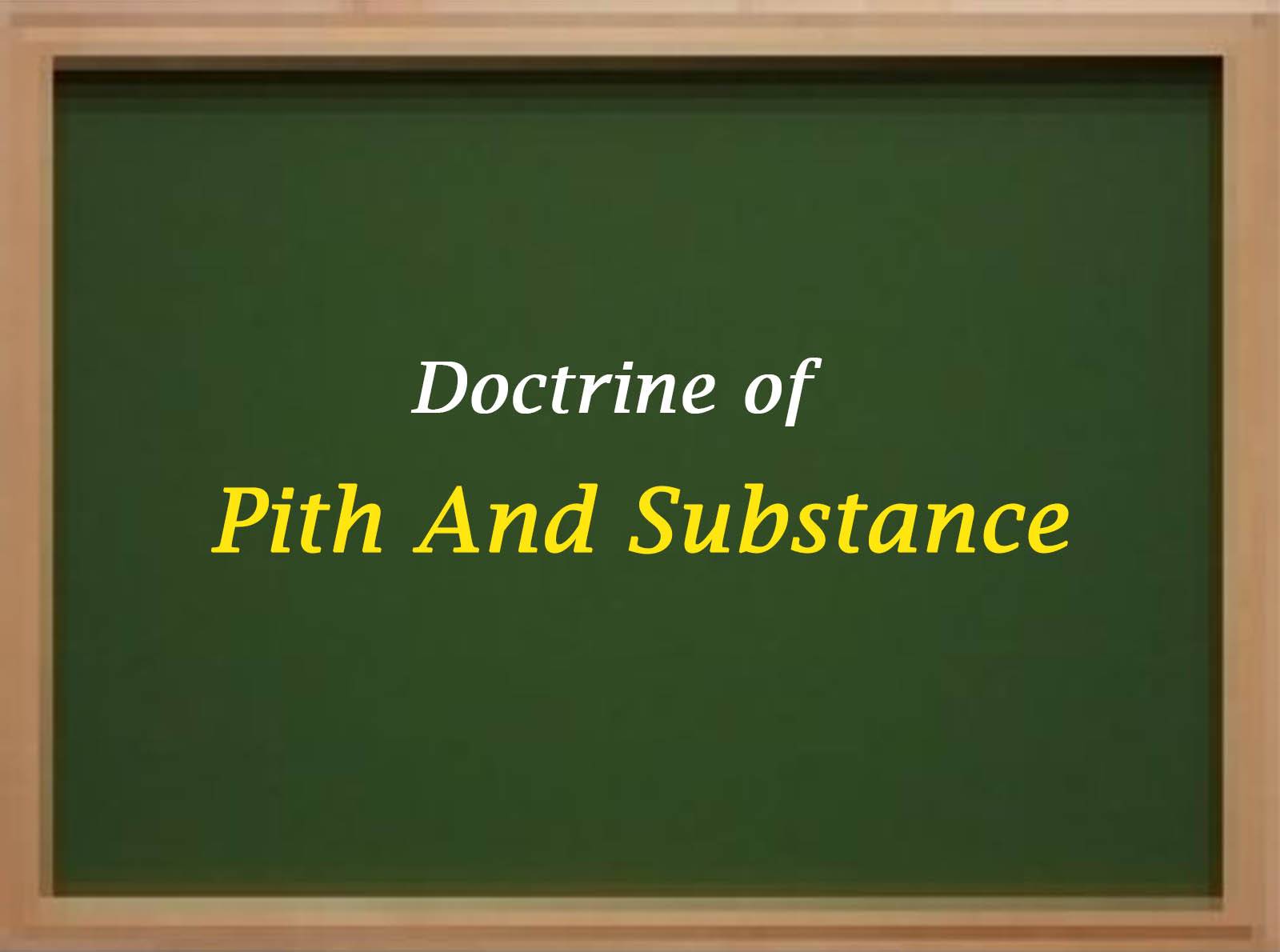Table of Contents
Doctrine of Pith and Substance – Article 246
Introduction
The very underlying reason for constituting the Doctrine of Pith and Substance is for the purpose of determining a particular piece of legislation falls under which head of field or power which actually means the list (Seventh Schedule).
Pith means ‘true nature’ or ‘essence of something’ and substance means ‘the most important or essential part of something’.
The Doctrine of Pith and Substance states that the court always determines what is contained in the substance of the matter when a question arises as to determine whether or not a particular relates to a particular subject. Hence, it can be inferred that suppose there is encroachment on the State List by the law and the particular substance actually falls within the Union List, then it cannot be declared as invalid.
This Doctrine of Pith and Substance which is incorporated in the Indian Constitution as a prominent doctrine is in fact a Canadian Doctrine. The case of Cushing v. Dupuy was the first case in which the Doctrine was firmly established. The Privy Council evolved the Doctrine for the purpose of determining whether a particular impugned legislation is intra vires or not and the same must be regarded to its pith and substance.
Need for the Doctrine of Pith and Substance in the Indian scenario
The main reason for the application of the doctrine is for the purpose of providing a certain degree of flexibility due to the existence of unbending distribution of powers in our country. This doctrine came into force because otherwise the powers of the legislature would be bounded to a very large extent if every legislation would be declared on the grounds of encroachment of power.
“It is settled law of interpretation that entries in the Seventh Schedule are not powers but fields of legislation. The legislature derives its power from Article 246 and other related articles of the Constitution. Therefore, the power to make the Amendment Act is derived not from the respective entries but under Article 246 of the Constitution. The language of the respective entries should be given the widest scope of their meaning, fairly capable to meet the machinery of the Government settled by the Constitution. Each general word should extend to all ancillary or subsidiary matters which can fairly and reasonably be comprehended in it. When the vires of an enactment id impugned, there is an initial presumption of its constitutionality and if there is any difficulty in ascertaining the limits of the legislative power, the difficulty must be resolved, as far as possible in favour of the legislature putting the most liberal construction upon the legislative entry so that it may have the widest amplitude.”
Ancillary and Incidental Encroachment
The situation of dealing with any item in the Union List by the State Legislature was explained in great detail in the case of Prafulla Kumar Mukherjee v. The Bank of Commerce. It was held by the court that any matter must be ascribed to its appropriate list based on its actual character and nature without taking into account the ancillary and incidental effects of the Statute which was enacted by a State Legislature.
Therefore, it is clearly evident that the competency of the State Legislature to enact the particular law in question will not be affected at any cost in the case of encroachment made by the State Legislature is only supplementary in nature. In addition to this, if the incidental encroachment which was done by an enactment in the State List was the substance of an enactment within the Union List, even then it would not be invalid.
But the situation which is related to Doctrine of Pith and Substance is slightly different when it comes to Concurrent List. If a law covered by an entry in the State List made by the State Legislature contains a provision which directly and substantially relates to a matter enumerated in the Concurrent List and is repugnant to the provisions of any existing law with respect to that matter in the Concurrent List, then the repugnant provision in the State List may be void unless it can coexist and operate without repugnancy to the provisions of the existing law.
Important Judgements on the Doctrine of Pith and Substance
1. State of Bombay v. FN Balsara
This is the first important judgement of the Supreme Court that took recourse to the Doctrine of Pith and Substance. The court upheld the Doctrine of Pith and Substance and said that it is important to ascertain the true nature and character of a legislation for the purpose of determining the list under which it falls.
2. Mt Atiqa Begum and Anr v. Abdul Mghni Khan and Ors.
The court held that in order to decide whether the impugned act falls under which entry, one has to ascertain the true nature and character of the enactment i.e. its ‘pith and substance’. The court further said that “it is the result of this investigation, not the form alone which the statute may have assumed under the hand of the draughtsman, that will determine within which of the Legislative Lists the legislation falls and for this purpose the legislation must be scrutinized in its entirety.”
References
1. Cushing v. Dupuy, (1880) 5 AC 409
2. Prafulla Kumar Mukherjee v. Bank of Commerce, AIR 1947 PC 60
3. State of Bombay v. FN Balsara, AIR 1951 SC 318
4. Mt. Atiqa begum and Anr. v. Abdul Maghni Khan and Ors., AIR 1940 All
Author: Haritha Malepati,
3rd year BBA LLB, Symbiosis Law School, Hyderabad

